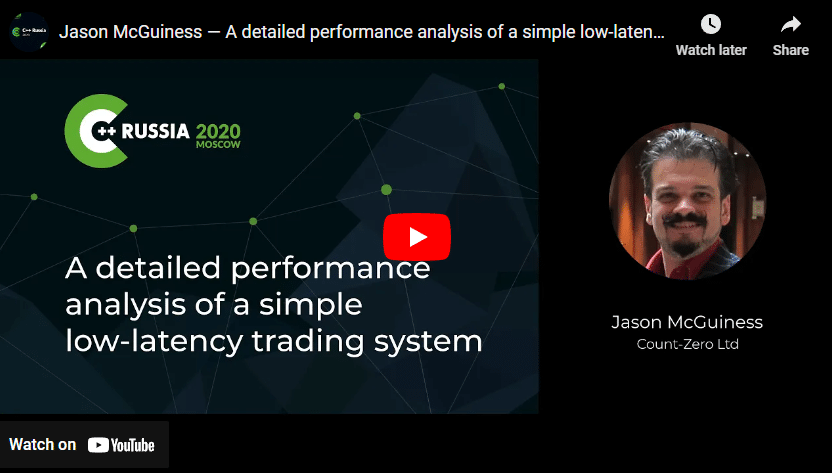The video titled “A detailed performance analysis of a simple low-latency trading system” presents an overview of a simple low-latency trading system and evaluates its performance. The speaker walks through the design of the system and the various technologies and components used in its construction. The system consists of a trading application, a market data processor, and a messaging middleware. The video also covers the testing methodology used to evaluate the system’s performance, including latency measurements and throughput measurements. The results of the testing show that the system is capable of processing a high volume of transactions with low latency.
Introduction to low-latency trading systems
It begins by providing an overview of low-latency trading systems and the importance of speed in the financial markets. He explains that low-latency trading systems are designed to execute trades as quickly as possible in order to take advantage of market opportunities. The speaker highlights the importance of designing systems with low-latency and high-throughput capabilities to remain competitive in the financial markets.
Design of the trading system
Then it walks through the design of the trading system, which consists of a trading application, a market data processor, and a messaging middleware. The trading application is responsible for receiving orders from traders and sending them to the market data processor. The market data processor receives data from the exchange and sends it to the trading application. The messaging middleware is responsible for transmitting messages between the trading application and the market data processor.
Technologies and components used in the trading system
Discusses the various technologies and components used in the trading system, including Linux operating system, Java programming language, and the FIX protocol for message transmission. He also covers the use of Intel processors and solid-state drives to provide low-latency performance.
Testing methodology for evaluating performance
Describes the testing methodology used to evaluate the system’s performance. The testing methodology consists of measuring latency and throughput. Latency is measured by recording the time it takes for an order to be received and executed, while throughput is measured by recording the number of orders processed per second.
Results of testing and analysis: The speaker presents the results of the testing and analysis. The system was able to achieve an average latency of 62 microseconds and a maximum throughput of 12,000 orders per second. The speaker notes that the system’s performance can be further improved by optimizing the hardware and software components.
Top 5 Challenges:
- Designing a low-latency trading system that can process a high volume of transactions with low latency.
- Identifying the appropriate technologies and components to use in the trading system to achieve the desired performance.
- Testing the system’s performance in a realistic environment that accurately simulates market conditions.
- Measuring and analyzing the system’s performance to identify areas for improvement.
- Optimizing the hardware and software components of the trading system to further improve performance.
In conclusion, the video provides a detailed overview of a simple low-latency trading system and the technologies and components used to construct it. The testing methodology used to evaluate the system’s performance is described, and the results of the testing and analysis are presented. The challenges associated with designing, testing, and optimizing low-latency trading systems are also discussed. This information can be useful for individuals and organizations interested in developing low-latency trading systems or improving the performance of existing systems.


